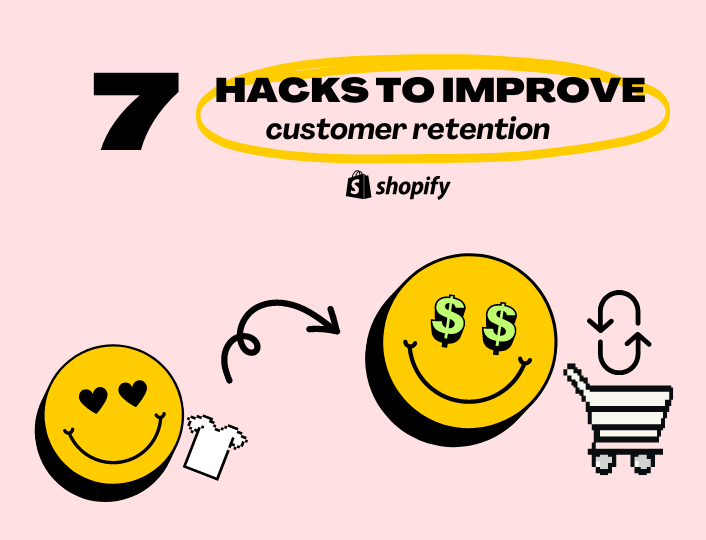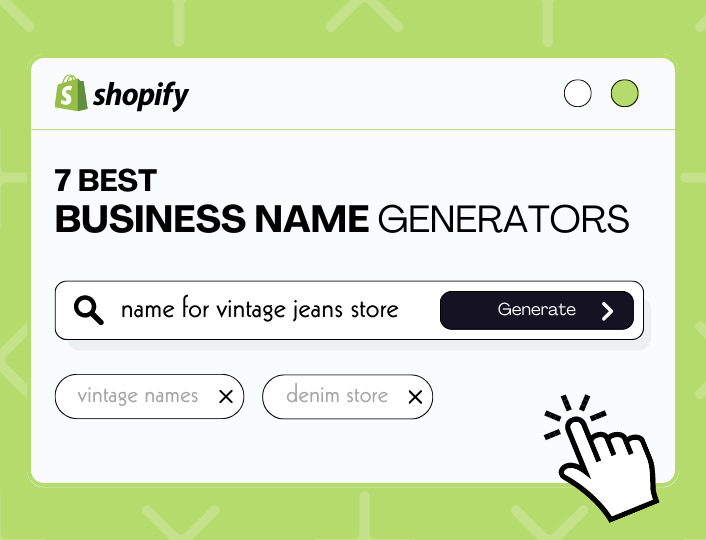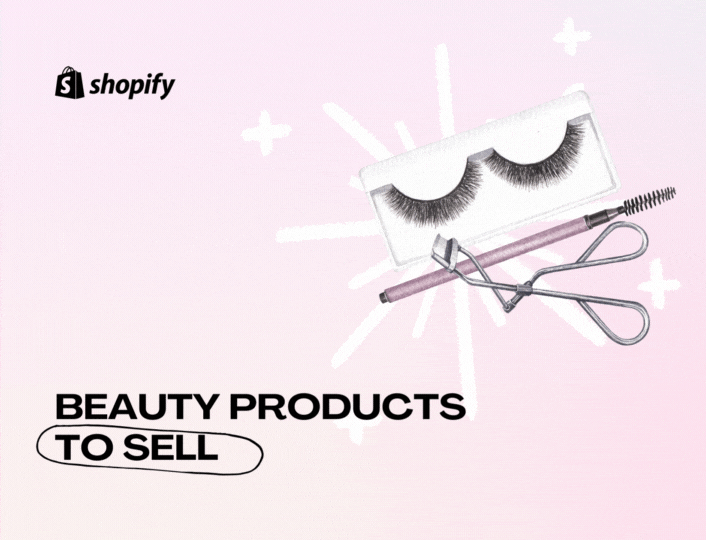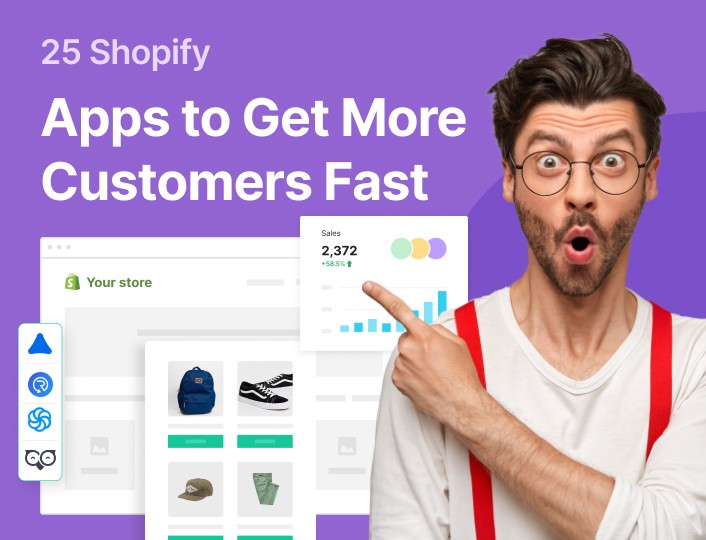Customer retention is the most cost-effective strategy for sustained growth, better than investing in customer acquisition.
Research shows that acquiring new customers is 5x more expensive than retaining existing customers, which is why businesses prioritise customer retention. This is backed by Bain & Company which suggests businesses prioritising customer retention over acquisition are 60% more profitable.
You can get your businesses above your competitors with the right customer retention strategy. This guide explores the importance of customer retention, KPIs metrics to measure retention and effective strategies to enhance customer retention for your Shopify store.
- What is a Good Returning Customer Rate on Shopify
- Importance of Customer Retention
- Customer Retention Strategies for Shopify
- KPIs for Measuring Customer Retention
- Factors that Affect Customer Retention
- When to Focus on Customer Retention
What is a Good Returning Customer Rate on Shopify
A returning customer rate on Shopify is the percentage of customers who make repeat purchases from your online store. It’s a crucial metric that measures your store’s ability to retain customers and build loyalty.
Shopify returning customer rates can fluctuate based on your industry and business model. Research shows the Shopify retention rate is at 28.2%. Generally, aiming for a 20-30% Shopify retention rate is considered healthy. This means about one in four or five customers return to make additional purchases.
If your rate is lower, consider implementing strategies to boost customer loyalty, such as enhancing customer service, introducing loyalty programs, or executing targeted marketing campaigns. Conversely, a higher rate indicates strong customer satisfaction with your products and overall shopping experience.
The Importance of Customer Retention for Growth in Shopify
Shopify customer retention is crucial if you’re looking to grow and expand your brand. Harvard Business Review states that the top 10% of your customers spend three times more than the other 90%, highlighting the potential of high-value customers.
Beyond generating more revenue, focusing on customer retention helps you build loyal customers who are five times more likely to repurchase and four times more likely to refer your business to others.
7 Customer Retention Strategies for Shopify
Leverage Email and SMS Marketing
Leverage email and SMS marketing for customer retention. Send personalised messages to customers about special promotions, sales, and new arrivals via email. Also, WhatsApp business is another good channel you can use to send tailored messages directly to your customers.
Aside from email marketing, SMS marketing is gradually gaining a lot of audience amongst businesses since mobile users generate more of the website traffic. More companies are pivoting towards SMS marketing for more personalised communication.
For example, Wag! A pet-sitting and walking service in the US uses SMS marketing to offer pet service discounts to their customer during the Holiday. The message is targeted to travelling customers to give them peace of mind knowing mentally while away from home.
Source: SMS promotional text from Wag!
To retain customers using email marketing, there are two types of email you send to customers—Transactional email and Promotional Email.
Transactional emails include checkout reminders, order confirmation emails, order receipt emails, order tracking and Thank you emails. This email updates customers on their shopping status which shows that your brand can be trusted. Customers with this experience will surely want to shop from your store again.
Secondly, promotional emails which include new product announcements, newsletters, pre-launch sales and seasonal promotional deals provide vital information for interested customers. See the guide on how to grow sales with email marketing.
Also, if you are yet to build or grow your email contact list, check out Adoric. An email popup builder that enables you to create popups for email collection in your Shopify store.
It also offers other amazing features such as a free shipping bar and gamification where you offer discounts and free shipping to customers to email subscribers.
Encourage Shopping with Discounts and Special Offers
Discounts and special offers are another effective customer retention strategy. Research shows that over 53% of consumers admit that they will stay longer with brands that offer discounts and loyalty points. This shows the impact discounts and special deals have on customers.
However, offering discounts can be tricky because if not properly planned may result in loss. Therefore, you need to create an effective discount strategy that will be beneficial both to you and your customers. Some of the best discount strategies include discounts for returning customers, holiday sales discounts, spin-the-wheel coupon offers and Bundle quantity breaks.
With returning customers more likely to buy more from you, you can offer quantity break discounts to customers. With this, they get higher discounts for more products they buy.
For example, Ahava a beauty and skincare brand uses Adoric’s bundle quantity breaks to offer quantity break discounts to customers who purchase more volume of the same products.
This saves customers more money that can be used to buy more products or in next shopping. Also, they utilise Adoric’s free shipping bar to offer free product shipping to customers when they reach a pre-defined amount.
Provide Exceptional Customer Support Services
Excellent customer service is another retention strategy Shopify businesses use to retain customers. Research by Qualtrics shows that companies that provide excellent customer experience see 7 times higher revenue growth than those that don’t. Also, 89% of companies believe that excellent service is critical.
In addition, 70% of customers agreed to do business with a company if it resolves a complaint quickly, 52% of customers who experienced positive customer service have purchased more from a company while 66% of B2B customers stopped buying after a bad customer service experience. Also,
To provide exceptional customer service, businesses use chatbots and other automated tools to provide prompt responses to customer questions. Although customers prefer human connections, these bots give immediate responses pending when a support representative is available.
Nowadays, Shopify businesses provide 24/7 support services, FAQs, video guides, online communities, help centres etc to quick resolution and ensure customers’ satisfaction.
For example, Adoric offers an in-app live chat that enables you to connect to the support team that responds and provides swift solutions to problems.
Launch a Customer Loyalty Program
Creating a loyalty program for customers shows your appreciation for customers who shop from you. Aside from discount and coupon deals, there are other loyalty programs you can use to gain customer loyalty.
These loyalty programs include a point program which is one of the commonest and simplest businesses use. Here, the customer gets points for every purchase in your store, then these points are later awarded depending on the size of their purchase. These points are converted into some kind of reward.
Other programs include spend-based programs, tiered programs, paid programs (VIP membership clubs), value-based programs, partnerships etc. Leverage any of these programs to create a loyalty bond between you and your customers. Learn how to boost engagement with loyalty programs.
For example, Star Bucks reward stars to customers for every £1 spent. Customers get a free drink for every 150 stars accumulated.
Use Subscription model services to retain customers
By giving your clients the option to subscribe to your products or services, you create a convenient and personalized experience that keeps them coming back. Imagine how much easier it is for your customers to sign up for regular deliveries of their favourite items. This saves them time and effort, and they start to feel a real connection to your brand.
Plus, when you throw in exclusive benefits and discounts for subscribers, you’re giving them even more reasons to stay loyal and keep their subscriptions going. This approach not only boosts customer retention but also gives you a steady and predictable revenue stream.
For example, Huel a US-based nutritional brand makes use of a subscription model to sell their products. They offer 12-bottle subscriptions delivered from weekly to every 8 weeks (your choice). This lets Huel focus on delivering a quality product without worrying about customers forgetting to reorder when they’re running low.
Create Policies that Simplifies Return Process
Businesses with simplified return policies attract more customers than others without one. A difficult return policy will cost you 84% of your shoppers. Subsequently, 33% of repeat customers may stop buying from you if they find the return experience challenging.
Therefore to keep customers satisfied, you need to create a free and hassle-free return policy for customers. This includes a transparent policy that customers can understand. A clear and accessible return policy page on your website offers free prepaid return shipping and, if possible, automates the return process.
Having the right return policy increases customer satisfaction with your brand, increases customer loyalty, and attracts more repeat customers and referrals.
Third-party return apps like Parcel Panel enable you to customise and automate the return process for customer satisfaction and brand trust.
For example, Zappos an online retail store for shoes and sneakers offer a full refund for items returned within 365 days of purchase. Also, they provide exchange options for eligible items instead of a refund. However, the products need to be in their original form during purchase for return to be accepted.
Encourage User-generated Content
Encouraging user-generated content is a great way to make your customers feel heard and valued. Rather than only focusing on how to sell more products to your customer, encourage them to share their experience about previous purchases.
This is a great way to boost your Shopify retention rate. Many customers will grab the opportunity to share their experience using your product or service.
Solicit feedback from customers occasionally to understand their pain points, satisfaction levels, and suggestions for improvement. You can also request videos and photos of customers using your product and services. And share them on your website or social media channels.
Also, endeavour to act on the suggestions and reviews to improve your customers’ experience. In addition to customer retention, UGC helps you build authority and attract more customers.
A very common form of user-generated content is online reviews.
Common KPIs for Measuring Customer Retention
Key performance indicators (KPIs) for customer retention are crucial for understanding how well a company is keeping its customers over time. Here are some essential KPIs (how to calculate them) to consider:
Customer Retention Rate:
This measures the percentage of customers who continue to make purchases from your store over time. This metric can be tracked from the Shopify analytics dashboard or with the formula:
For example,
- Starting Customers (at the beginning of the period): 100,000
- New Customers Acquired During the Period: 20,000
- Customers at the End of the Period: 105,000
Calculating with the formula: CRR = ((105,00 – 20)/100,000) x 100 = 85%
This means that 85% of the customers who were subscribed at the beginning of the period remained subscribed by the end of the period.
Increasing your customer retention rate will have a significant impact on your total revenue and profit.
Customer Lifetime Value
Customer lifetime value estimates the total revenue a customer is expected to generate as long as they shop from your store. CLV varies with industry and products. A business that sells indispensable goods (deodorants, diffusers, etc) bought frequently may record a higher customer lifetime value than a SaaS company with a monthly/yearly subscription rate.
To calculate the Customer Lifetime Value, you need to multiply the average value of a purchase, the number of times the customer will buy from you and the average length of the customer relationship in years.
For example, you have a customer who buys products worth $100 about 20 times a year, and the customer intends to shop from you for 5 years. The CLV will be 100 x 20 x 5 which equals 10,000. Therefore, the customer value is $10,000.
Improving the CLV with the action steps will affect your overall store performance positively. The customer lifetime value can only be analyzed by the store owner (it’s not available on Shopify analytics).
Average Order Value (AOV)
Average Order Value (AOV) tells you the average amount a customer spends per order in your Shopify store over a period.
AOV is an important metric for your store as it is used to track sales performance and predict customers’ buying habits. Increasing Average Order Value is important for your store’s success to boost revenue without acquiring more customers. All you need is to implement recommendation strategies such as cross-selling, upsells, bundles and volume discounts to increase AOV.
To calculate, use the formula:
For example, if your store generated a total revenue of $2000 from 100 orders, your average order value is $20. Marketing and sales costs are excluded.
Other important steps to take to ensure higher AOV are to analyze products or product combinations that tend to have higher AOV, implement upselling and cross-selling techniques on product pages and at the checkout stage, and run promotions or offer incentives for customers to increase their order size.
Repeat Purchase Rate
This metric measures the percentage of customers who make multiple purchases over a specific period. It provides insights into customer loyalty and satisfaction, indicating how often customers return to buy again. A high repeat purchase rate suggests strong customer retention and successful customer relationship management.
Formula for Repeat Purchase Rate:
For example, in an online retail store
Total number of customers in a period: 10,000
Number of customers who made more than one purchase: 2,500
RPR = (2,500/10,000) x 100 = 25%
This shows that the repeat purchase rate for the online retail store is 25%. This means that 25% of the store’s customers made more than one purchase during the specified period, indicating a significant level of customer loyalty and repeat buying behaviour.
Churn Rate
Churn rate, also known as attrition rate, measures the percentage of customers who stop using a product or service over a specific period. Businesses must monitor this rate to understand customer retention and identify potential issues that may lead to customer loss.
The churn rate is calculated by dividing the number of customers lost during a period by the total number of customers at the beginning of the period, then multiplying by 100 to get a percentage.
For example, Bexty, a subscription-based streaming service had 1,000 customers at the beginning of the month and lost 50 customers by the end of the month, the churn rate would be (50/1000) * 100 = 5%.
The churn rate for the month is 5%.
Customer Engagement Rate
This measures the overall customer engagement on all marketing channels. It combines various metrics like website visits, email opens and social media interactions to measure customer engagement with your business.
Factors that Affect Shopify Customer Retention
Customer satisfaction: if customers are satisfied with the overall shopping experience from your Shopify store, they are more likely to become loyal to a business. The opposite is applicable if a customer is not satisfied.
Convenience and ease of use: you may offer the best services, but if your customers encounter difficulties shopping on your website or using your product, it could keep them away from returning.
Quality of products or services: unless you are catering to customers who do not care about quality, providing high-quality products or services that meet or exceed customer expectations is non-negotiable for retaining your Shopify customers.
Brand reputation: brand reputation is crucial to how customers respond to a business. A positive brand reputation establishes trust which is a foundation for customer loyalty. The opposite is true in the place of a negative reputation.
Customer support: Offering responsive, timely, and efficient customer support can significantly impact your Shopify customer retention rate. Promptly addressing inquiries, concerns, and issues helps boost customer satisfaction which is a perfect way to build trust and loyalty.
Competitive pricing: 78% of customers say they consider pricing when selecting a business to buy from. Offering your customers fair prices compared to competitors can influence their decision to stay with your Shopify business leading to an increase in customer retention rate.
When to Focus on Customer Retention
In business, there is no specific period to focus on customer retention. You need a retention strategy as soon as you create your business. As a Shopify merchant, your goal is to create channels that will keep customers within your brand. Here, are some of the other times you need to focus on retention
Post-Initial Growth Phase: Once a business has established a solid customer base and experienced initial growth, it’s essential to shift focus to retaining those customers to ensure long-term sustainability.
Post-Sales or Major Purchases: After a customer makes a significant purchase, focusing on retention strategies like follow-up services, loyalty discounts, and personalized communication can enhance their experience and encourage repeat business.
Introduction of New Products or Services: When launching new products or services, targeting existing customers who already trust the brand can lead to quicker adoption and positive word-of-mouth referrals.
High Customer Acquisition Costs: If the cost of acquiring new customers is high, it makes more sense to retain existing ones. For instance, a software as a service (SaaS) company might invest in customer support and regular updates to retain its subscribers, as acquiring new users could be more costly due to extensive marketing and sales efforts.
Expert’s Summary
To boost customer retention on Shopify, focus on personalised marketing strategies and loyalty programs that reward repeat purchases. Engage your customers through targeted email campaigns, tailored product recommendations, and exceptional customer service to build long-term relationships.
Conclusion
Retaining customers in your Shopify store is an ongoing process that requires continuous effort and adaptation. Never a one-time task. Remember, not every strategy discussed here may work for you, but by experimenting with them, you can increase your chances of success. It’s crucial to figure out what works best for your business.
Regularly analyze customer data, monitor retention metrics, and refine your strategies to meet customer expectations and stay ahead of the competition. The goal of customer retention is to maximize value from your customers and increase your ROI.
As you develop your retention strategy, consider using Adoric to help turn leads into loyal customers and boost conversions.
Explore more Shopify resources here:






Helpful article. Thank you.